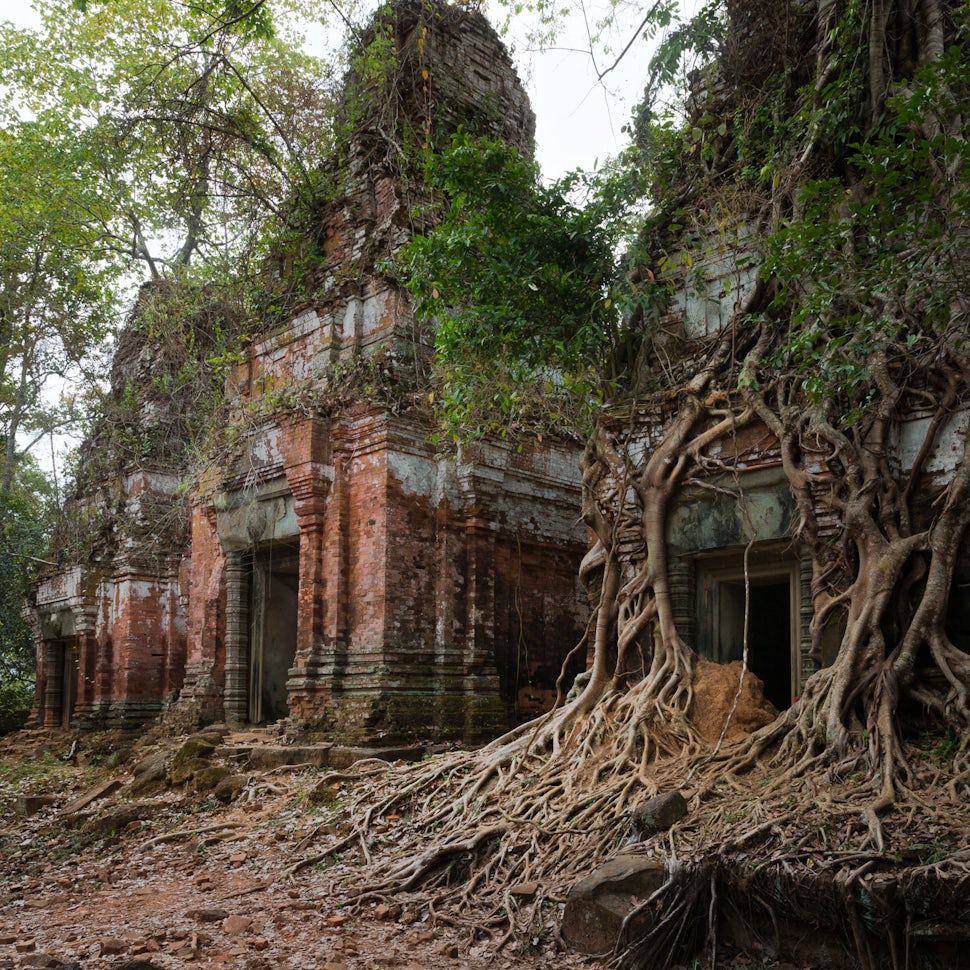Off the Beaten Path in Cambodia
After spending sunrise at Angkor Wat with several thousand people, I needed to find a way to explore Cambodia's incredible temples without the crowds.

Several years ago, I visited Siem Reap and was astounded by the beauty of the surrounding Cambodian temples. I watched sunrise at Angkor Wat with a small crowd but most of the time, I was able to wander through the temples without seeing more than a handful of other people. When I returned this year, I couldn’t believe how the town and tourism infrastructure had grown. Now there are over 800 hotels and 5,000 guides in Siem Reap. To get a temple permit, you enter a massive building and queue to have your photo taken for your permit badge. In high season, you can watch sunrise at Angkor Wat with several thousand of your closest friends.
Despite all that, I wanted to try to recapture the magic of my prior visit. And so, off I went to watch sunrise at Angkor Wat. Surrounded by hundreds of selfie sticks and thousands of people, I quickly realized I’d need a new approach. A local guide mentioned that a new paved road had recently been constructed to a temple complex called Koh Ker. Because it was over two hours away from Siem Reap, most of the tour groups avoided it. I was sold immediately.

Koh Ker was briefly the Khmer capital from 928-944 AD under Kings Jayavarman IV and his son Harshavarman II. It’s a fascinating case study in the ways that nature will reclaim human construction. Many of the temples have become one with the forest and several feature massive trees rising up through the sandstone and brick. My two favorite sites at Koh Ker were Prasat Pram and Prasat Thom. If you’ve been to Ta Prohm (aka the “Tomb Raider” temple), you’ll love Prasat Pram. It features five towers all overgrown by the jungle. Prasat Thom is a temple complex with a seven-tiered grass-lined pyramid that seems more at home in Central America. The original steps are in disarray but a new walkway has been constructed which allows you reach the top of the pyramid and see for miles around.

Koh Ker takes a few hours, so I paired it with a stop at Beng Mealea. Beng Mealea is about 40 km from the Angkor temples but on the way to Koh Ker. Most of the tourist groups that come to Beng Melea arrive in the morning, so I headed here after Koh Ker. Beng Mealea is largely unrestored and feels like a scene out of the Jungle Book with vines and trees protruding out of the sandstone (plans are in the works for future restoration). You’ll walk along a straight pathway to reach the temple entrance and then navigate wood platforms throughout the temple.

Exploring Koh Ker and Beng Mealea were my favorite parts of my stay in Cambodia. They reminded me of what Angkor Wat and Ta Prohm were like years ago - places that you could wander in silence and awe. If you do decide to head up here, a couple quick tips. One, there is no public transportation so you'll need to hire a car or join a tour. Second, while both sites have been cleared, land mines are still a huge issue in Cambodia and you should remain on the trails.
If you come to Siem Reap, it’s a given that you'll want to spend a day doing the main attractions like Angkor Wat and Angkor Thom. If you have another free day, I'd recommend you head up north to Koh Ker in particular. In a couple years, I'm sure there will be massive hotels and giant tour buses coming through like at Angkor Wat, but right now, it feels like a lost world hidden in the jungle.
We want to acknowledge and thank the past, present, and future generations of all Native Nations and Indigenous Peoples whose ancestral lands we travel, explore, and play on. Always practice Leave No Trace ethics on your adventures and follow local regulations. Please explore responsibly!
Do you love the outdoors?
Yep, us too. That's why we send you the best local adventures, stories, and expert advice, right to your inbox.





